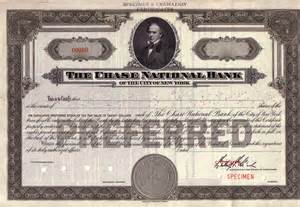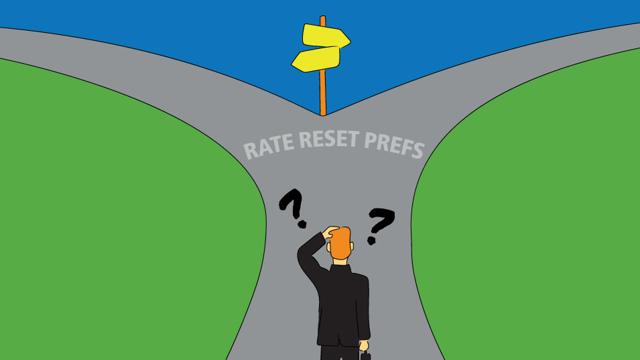There Are Preferred Stocks And There Are 'Preferred' Preferreds
Regular readers know that I invest mostly for growth. Our long positions via common stocks, ETFs and equity mutual funds represent the growth side. I think of this as unfurling the sails when the wind is most favorable.
But to remain upright as the wind picks up, every good ship needs ballast. That's where our preferred shares, floating rate bond funds and smart beta holdings come in. Only, capturing the wind can be dangerous when it blows too hard.
Most investors buy preferred shares because they pay a better dividend than most other investments of similar quality. They recognize as well that dividends paid to preferred shareholders are typically paid before common shareholders can receive dividends, and that preferreds are senior to common shares in a company's capital structure. They also understand that preferred shares purchased below par with a high coupon rate might also be called early, provided a nice capital gain. (The excellent website quantumonline.com has all this information in an easily understood format.)

What many do not know, however, is that some preferreds have interest rates than can be reset.
One argument against preferreds, and nearly every other type of income, is that they tend to decline in value as rates rise. But while preferreds can be issued in many different denominations - $25, $50, $100 are the most often individual investors see - they are also issued, often as private placements to large institutional investors, in denominations of $1000. And these are most often the preferreds that rest in favor of the holder as interest rates rise.
Some companies which have issued these preferreds, which are often classified as FRNs (floating rate notes) because of their reset feature, are General Electric (NYSE:GE), Wells Fargo (NYSE:WFC), Goldman Sachs (NYSE:GS) and JPMorgan (JPM.) Banks are big issuers of institutional preferred and, as the beneficiaries of rising rates, know they can sweeten their offerings by offering resets as rates rise.

These institutional preferreds usually trade over the counter rather than on exchanges, so the spreads can be awful. It pays, in this asset class, to use an active fund manager or ETF that can buy in sufficient size and with sufficient savvy to select the best. One such offering that I and many of my clients own is the Nuveen Preferred Securities Fund A (MUTF:NPSAX).
(I buy Class A shares because, as an RIA, I receive the $1,000,000 breakpoint on Class A shares, meaning our clients pay no load. But rest assured, there are many other classes of shares, including some exclusively for 401(k)s and 403(b)s. Check your own company's retirement plan offerings.)
Whichever class of shares you conduct your own due diligence on, you will find that more than 80% of the fund's current holdings are in securities whose coupons can reset. And about ¾ of the fund's holdings are in these institutional class shares that are difficult to buy in quantities of less than a thousand or more shares. The current yield for NPSAX is 5.4%, it has an exceptionally low annual turnover of 15% and its expense ratio is just 1.07%. Over the past 10 years, including the fiasco of October 2007 to March 2009, $10,000 invested in NPSAX became a shade over $18,000.
Boring? Yes, to some. But I need ballast, lest the ship list too far and heels over. NPSAX fills one of those "ballast" positions for my clients and my family accounts. I like to have some positions I don't need to check minute to minute - or even daily!




Now is not the time to buy preferreds.
By the way, if anyone prefers ETFs to mutual funds, FPE is my favorite preferred ETF. It also owns a number of resettable preferreds and has a slightly lower expense ratio of 0.85%, but has also not done quite as well in total return as the managers at NPSAX.
Excellent article Joe, but are you sure about the expense ratio? It seems awfully high! $NPSAX
Thank you for commenting, Ms Klein. I appreciate you catching that typo! Yesterday was an interesting time here at 7000 feet at Lake Tahoe. We lost power for a short time, my neighbor's roof collapsed and I had to hack down a massive ice dam at my place during what is likely to be our last "big" blizzard of the season. As this variation of the old saying goes, "Post in haste, repent at leisure." Thanks again!
Thanks for the worthwhile read. I do see that typo has already been fixed.
So sorry to hear that @[Joseph Shaefer](user:9785)! Hope all is okay!
Good catch Karen, according to Morningstar, it looks like $NPSAX's expense ratio is actually 1.07.
...and a special Tip o' the Hat to reader Bill Johnson who must have thought, "Really? Joe thinks a 1.7% expense ratio is a good thing???" and researched it on M*. I can't edit the article once published but I'll ask the editors to fix it right now. THANK YOU.
Joe
Thanks Joe!
Thanks for sharing
Thanks for sharing